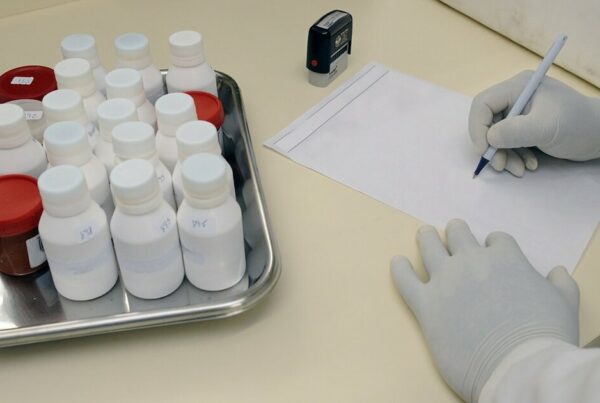Patient retention in clinical trials is crucial to running cost-effective campaigns.
- Struggling to retain patients throughout the duration of your clinical trials?
- Worried about the impact of high dropout rates on study timelines and outcomes?
- Unsure how to effectively engage and motivate patients to remain in the trial?
There’s no way around it: clinical trials are expensive. With recruitment throwing up complex and costly challenges that take months to overcome, low retention rates have the ability to undo all this hard work with dangerous levels of participant drop-out that will certainly waste money and can, at worst, destroy the study.
This issue is compounded by the fact that as studies progress, participation needs increase, and with these, the subsequent overheads. Therefore, the later stages of a study are most vulnerable to the damage of poor retention, and many therapies are lost for this reason.
But there are ways to boost retention, and a little investment early-on can save countless troubles down the line. We’re going to go into how to calculate retention rates, why you should, and what to do with this information, but let’s first go into more detail about the significance of patient retention.
This article is for:
- Clinical trial coordinators and investigators seeking insights into improving patient retention strategies.
- Pharmaceutical and biotech professionals responsible for designing and overseeing clinical trials, eager to optimize patient participation and retention.
- Patient advocacy groups interested in understanding the importance of patient retention and how they can support initiatives to improve retention rates.
Patient Retention in Clinical Trials: Here’s Why It Matters
In clinical trials, good recruitment is essential for building up a large enough sample size to make a powerful trial. However, perhaps more important is the retention of the patients recruited. A sample size is only good if it’s maintained throughout the study, and without enough recruits at the start to compensate for dropout, a trial is doomed before it even begins.
Why Does Retention Matter So Much?
Two major factors make retention so important. Firstly, the power of the study requires a committed sample of patients to run the course. Sample sizes that are too low will not provide enough data to draw significant conclusions about a treatment’s efficacy.
Secondly, the cost of recruitment is so high, and takes so long, that losing patients creates huge costs for the trial and much wasted time and resources. Not of these factors can contribute to lower morale in relevant teams, as the study doesn’t flow well and the results are not statistically powerful.
The Impact of Poor Retention
Reputations and funding sources are also on the line. Delays in clinical trials, some of which may be costing pharmaceutical companies up to $2Bn can cause significant financial losses to grant providers and hamper the chances of investigators sourcing funds in the future.
Patient Retention: A Focus for Investigators
Patient retention, therefore, has become a science of its own, and the discipline of keeping patients engaged, and the study on track, is the focus of many trial managers and investigators.
Compensating for Poor Retention
A trial cannot progress between phases without high enough retention rates, and this means that regardless of how well recruitment went, poor retention will cause an early and wasteful end to a clinical trial attempt. One way that studies need to compensate for this effect is by recruiting more patients than they need.
This is clearly an inefficient solution and doesn’t address the causes of the issue as much as the symptom, however, it is a necessary redundancy measure, regardless of the retention rates of any study. The other approach to reducing dropout is to identify and fix the causes.
Recruitment and retention are two of the most significant bottlenecks in the trial process, and while they’re separate disciplines, an effective study needs to use strategies and tactics to keep patients enrolled in trials and prevent them from dropping out. There are numerous ways to boost patient retention in clinical trials, but first, it’s important to know how to calculate clinical trial retention rates.
How To Calculate Clinical Trial Retention Rate
Subject retention percentage is a useful metric for checking the performance of any trial. Of course, it’s also the necessary metric for assessing whether efforts to boost retention are needed or, if implemented, are working.
Tracking retention rates can also illuminate any flaws in the system that might lead to dropouts. If retention rates are poor across all sites, it suggests an issue with the protocols; if they’re bad at only one site, some conclusions might be drawn relating to the staff or location of the specific site
The percentage retention represents the proportion of patients who remained in the study and didn’t drop out of their own accord. Disqualifications or other forms of involuntary withdrawals do not count as dropouts and therefore are not included in this figure.
This calculation can be done at the site, study, or national level, and provides valuable insights around each, where needed. The calculation itself is simple: take the number of subjects who dropped out away from the total number enrolled. Divide the result by the total number enrolled, and multiply the outcome by 100.
This will give you a dropout percentage, but what should you do with it? It’s suggested that aiming for +2% of the planned retention percentage is a realistic target value. The retention percentage nationwide, across all phases, is 82%, so this might be a useful benchmark, however, rates will vary between phases, so it’s important to identify more specific targets when looking at retention rates at high resolution.
So, the calculation is simple; in fact, you only need two inputs: the number of patients enrolled and the number who voluntarily dropped out. Unfortunately, creating actionable steps from the output of this calculation is more complicated.
Performing on this metric involves identifying the reasons for it being what it is. High dropout rates aren’t always easy to explain, and there are many factors that contribute to retention. Knowing what to look for in advance can help you spot issues as they arise.
Factors Affecting Patient Retention in Clinical Trials
Protocols, procedures, or site issues can all contribute to poor retention in clinical trials. Identifying the specific reasons is the first step to finding solutions, so let’s take a look at some of the most common reasons for patient dropout.
Research coordinators themselves have identified that two of the major contributors to patient dropout are the length of the trial itself and the Participant’s belief that the intervention isn’t effective.

- Patient Relocation – Issues arise when a patient needs to move to another location and cannot access the same site. This is commonly an issue that cannot be fixed reactively and needs to be filtered out in recruitment.
- History of Adverse Events – During the study, there may be some side-effects or adverse events that occur, or are perceived to occur, from the given therapy. Whether these are from the treatment or not, patients who experience adverse effects are at high risk of dropping out.
- Fear of Study procedures – Similarly, procedures that make patients uncomfortable, cause pain, or are otherwise frightening, increase the likelihood that patients will not choose to continue with the study.
- Issues with Employers – A common issue that arises in trials is with patients being restricted by their jobs and not being allowed time off work to attend. Fitting studies around the work schedules of individuals can also be difficult, and taking up too much of a patient’s free time may also contribute to higher rates of dropout.
It should be clear from these examples that clinical trial retention rates are in some significant part affected by patient confidence. While there are practical reasons to drop out that may not be remediable, such as relocating, there are numerous emotional triggers leading to dropout which can indeed be addressed effectively with proper attention.
With a combination of new technologies and a better understanding of the factors affecting patient retention in clinical trials as a whole, it’s possible to reduce dropout to as low as 3%, as claimed in the linked paper above.
What are Some Ways to Boost Clinical Trial Retention Rates?
There are three important focuses to maximizing patient retention:
- Improving Recruitment – Recruiting patients who aren’t likely to run the course is the first mistake organizers make when it comes to patient retention. Improving this process is therefore the first way to boost recruitment rates.
- Improving Patient Experience – Once recruited, there are plenty of opportunities to boost engagement and improve the customer experience. Many of the dropout causes listed above relate to a lack of attention in this aspect of the patient journey.
- Making Use of Advancements in Technology – Modern technologies are bringing opportunities for improving the efficacy, speed, and comfort of clinical trials. One way to reduce dropout is with the effective adoption and implementation of these new technologies.
We can therefore address each of these in turn.
Recruitment Tips
The focus of recruitment should be on long-term adherence to the program. As such, the following criteria should be considered when creating the recruitment plan:
- Personality characteristics and other personal attributes – This can be a tricky thing to measure and is generally subjective, but there are some criteria that can serve as early warning signs of patient dropout, and the more stringent the recruitment criteria, the more you can reduce this.
- Key Indicators of Motivation – Finding the nature of the motivation for each participant can help predict retention rates. If a participant is doing it for money, as a chance of getting more urgent help with their issue, or as a way of contributing to medical science, their approach and attitude to the study is going to be different, and this will affect retention rates.
- Barriers – Identifying long commutes, busy work schedules and other barriers to participation early on will help select against high-risk participants entering the study.
- Patient perceptions of value – If you are able to identify what motivates patients to continue, what makes them comfortable, and what they will view as value throughout the study, you’ll be better equipped to provide this, or, recognize that these are outside of your capabilities and reduce the chance of onboarding a poor-fit patient. This is the preparatory side of the patient experience focus that you will be working with after recruiting.
Patient Experience Tips
Some basic fundamentals for improving patient experience come down to trust and engagement. From the patient perspective, a test that’s done on them is a lot more dehumanizing than a test that’s done with them, and when assessing motivations in the recruitment stage you should find plenty of evidence for this.
To improve retention by focusing on the patient experience, consider the following:
- Personable interactions – Each participant is an individual, and though the data analysis will necessarily treat them as a data point, it’s important that clinicians don’t. For retention, personal engagement is the number one area in which studies can improve. Having dedicated area managers or clinicians work with a select few participants improves the personal nature of outreach and keeps patients engaged.
- Education – Another principle factor of engagement is how much time is spent educating the patient on the qualities and stages of the study and its progress as a whole. Again, this counters the intuition that a patient is simply a randomized test subject, and reinforces the importance of their participation in the study. The value of every participant should be as obvious to the participants as it is to the researchers, so being transparent and forthcoming with information about the study is a good way to achieve this.
- Communications Strategies – Recruitment strategies should of course also make use of approved communications pathways, but for post-recruitment, these serve to streamline the exchange of information in both directions, and should be planned and set up beforehand, with the sites, the patient locations, and the patient capabilities in mind. Ease of communication is a huge driver of patient retention in clinical trials, so it shouldn’t be overlooked.
Modern Technology
For recruitment, there are significant advancements in AI that can identify high-value patients in a fraction of the time it takes recruiters acting manually. Further, some AI have been able to identify twice the number of high-value participants in the first six months.
For patient experience focuses, there are also advancements in communications and other information transfers. Wearable devices reduce the need for hospital visits and can transmit data remotely.
Using these devices, studies are able to run with less strain on human resources, let site time for patients and potentially more data, and an improvement in the accuracy of the data recorded. Overall, wearable devices save on costs directly, and in terms of patient retention by making the experience less of a strain on participants.
Devices can be linked to apps for recording and uploading of their data, which can be done manually or automatically. This allows clinicians access to unprecedented insights into patients without the need to bring them into the clinic or run invasive tests.
Handy communications apps allow patients easier reporting of their subjective states, and automated text messaging services like Mosio streamline communications by automating reminders, customizing workflows, and reducing the need for manual data entry.
By automating various elements of the process, appointment reminders are more effective, and more time can be allocated to personal outreach efforts and patient education, ultimately resulting in boosts to retention throughout the study.
Other Considerations
If your retention calculation provides you with a metric that’s lower than you expected, it’s important to look at whether this is a protocol issue or a site issue. For the former, low retention is usually related to the burden of the study. This might mean invasive procedures, long trips to clinics, and other inconveniences.
To remedy some of these protocols, it’s important to plan every element of the study in alignment with the desires of your ideal patient profile. This means not only adjusting your protocols but spending more time informing prospective participants with detailed counseling sessions to dispel any study of therapeutic misconceptions. This is particularly applicable when dealing with dropouts in relation to perceived ineffectiveness of the treatment, as uneducated patients may not see the long-term personal gain of participating in the trial.
If rates are low at a specific site, however, there may be an issue with training of staff, in which case the tips above come into play as part of a training initiative to align attitudes on site with the needs of the patients.
There could, for example, also be a logistical issue worth investigating, in which transport to the clinic is hampered and patients are inconvenienced to a higher degree than at some of the other sites. This is why the retention calculation should be done at large and small scales to get a holistic view of patient participation in your study.
Conclusion
Patient retention in clinical trials is one of the most significant contributors to the success of a study. High levels of dropout are particularly expensive and can ultimately lead to the premature ending of a good study.
There are multiple ways a study can lose its patients; some are a result of poor organization, others a lack of patient engagement, but by focusing on the patient experience, investigators can help keep patients interested and motivated, and boost retention percentages well into the 90s.
A combination of recruitment practices, engagement efforts and the facilitation by modern devices and communication apps should cover most dropout issues, but as always, it’s important to regularly calculate retention rates on both the small and large scale to monitor the effectiveness of your interventions.








